Welcome! This page is designed for anyone living at a distance from a child they want to help with literacy skills. It describes how to help a child learn to read and write with pleasure and ease — via 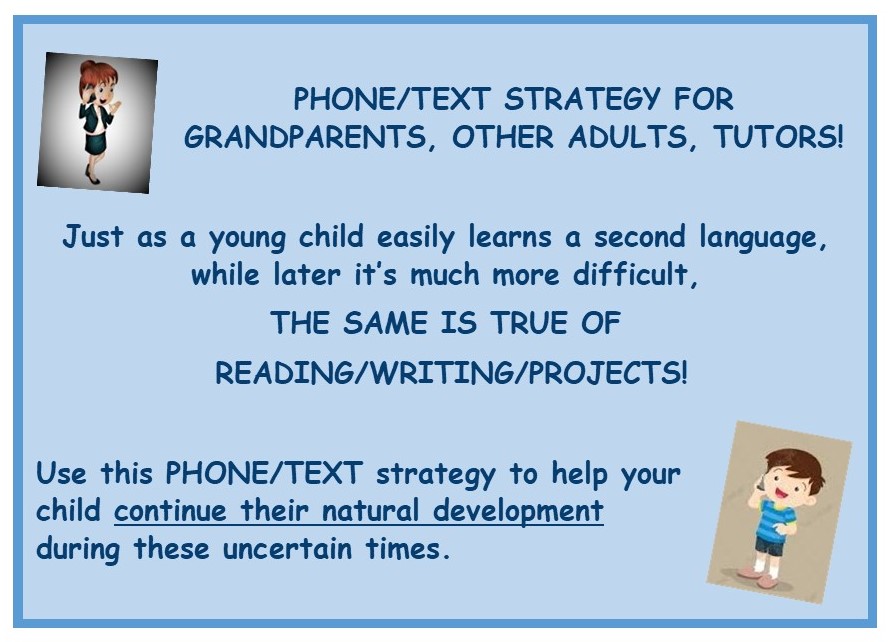 phone and text.
phone and text.
The basic strategy: Key Words and The Steps
At the heart of this approach is a simple, yet highly effective strategy known as Key Words — the “captions for a child’s mind pictures.” We use them to show a child how their own “talk” looks, when written down.
The child asks for one new Key Word each day. To be sure they will develop skills with Key Words, we have them carry out a follow up activity with it. For this we have 6 increasingly complex follow-up activities, known as The Steps.
Advancing through The Steps over time, the child gradually learns how to write what they want to say. And their new writing skills automatically transfer to reading.
Your involvement makes a big a difference with learning
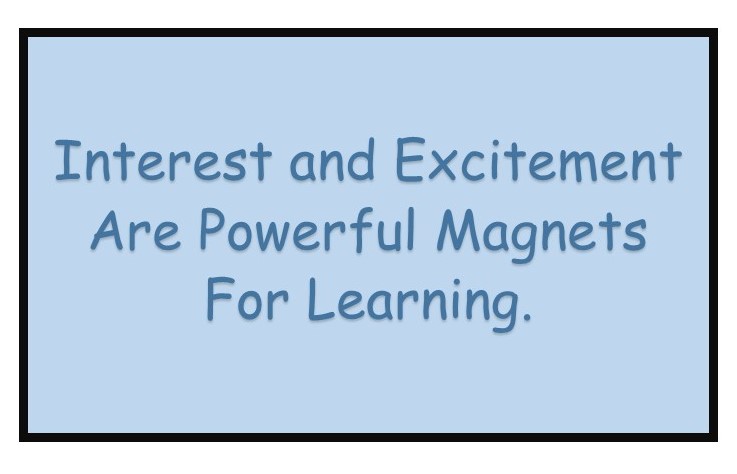 This Key Words activity takes about 15 to 20 minutes/day. Your involvement brings the activity an extra spark of excitement.
This Key Words activity takes about 15 to 20 minutes/day. Your involvement brings the activity an extra spark of excitement.
Studies indicate that interest and excitement are powerful magnets for skill development.
So with you involved in this already highly effective strategy, it’s likely your child will make exceptional progress.
That makes this a valuable activity for any child, whether the rest of the time is spent with in-person, virtual, or schooling at home. (See more about learning at home.)
Directions for The Activity
All the child needs is writing and drawing materials and someone on their end to help them — perhaps a parent, older sibling, or caregiver. We’ll refer to you as the Caller, and to the person on the child’s end, the Helper. I’ve written directions below for both of you.
The Helper’s directions appear in green, and yours are in black. Click here for a more detailed version of these directions.
We look first at how you would introduce Key Words to a child who knows little or nothing about print.
- On the Phone: Have the child tell you about something they love, fear, want, or are just very interested in. Encourage them to talk about it for awhile, so they form a strong “mind picture” about it.
- Help them decide on their Key Word: A Key Word is 1, 2, or occasionally 3 words that are a “caption for their mind picture.” For example, they may be talking about their dog (Bella), something they love to eat (ice cream), or something about a holiday (Christmas tree lights).
- Text the Key Word to them: At first, all you text is the word, ice cream. But as the child advances you text back a complete sentence, Your word is Bella.
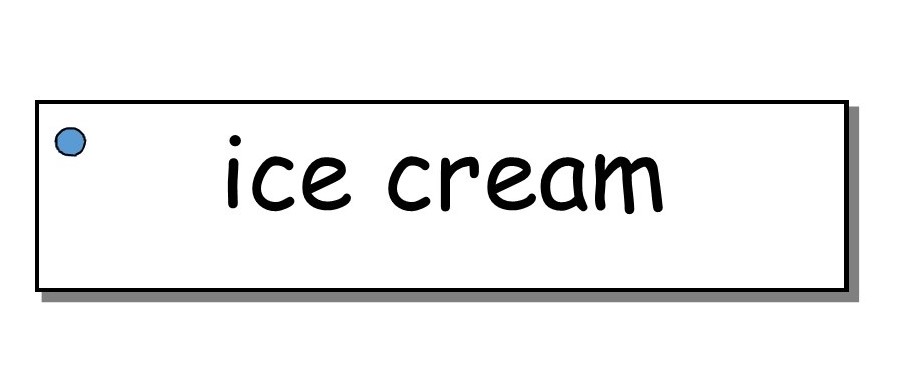 Helper: show the child the text when it comes in and copy the word by hand onto heavy card stock. (A recipe card will do.)
Helper: show the child the text when it comes in and copy the word by hand onto heavy card stock. (A recipe card will do.)
- Say the names and/or the sounds of each letter as you copy the word.
- Hold the word card out far enough, so the child can focus on the entire word. Have them say the word a couple of times.
- Place it on the table and have them trace over each letter with the index finger of their writing hand, while you say each letter or sound again.
- Help the child make a hole in the card and place it on their metal “Word Ring.” (A shower curtain ring will do.)
- Make a duplicate of the word card, to use for the child’s follow-up activity:
- A child who is able to draw gets a copy of the word on regular paper — to glue under their picture.
- A child not able yet to draw gets a copy on heavy card stock, so they can carry it around and do something with it.
- Then text the Caller. After the child finishes their work, send a picture and description of what they’ve done. Have the child watch and tell you what they want to say as you write. Read it over with them a few times and let them hit Send.
- Caller: Text back a brief message: For a child not yet reading at all, you write a very brief response. Something like, Great job. Or, Very good. Then later, reply with longer sentences.
So that’s all you do — except there’s one final point to make. To safeguard this strategy, the child must only have words on their Word Ring they immediately recognize — for these give them confidence with print.
Take a word off the ring a child does not immediately recognize
This section is for both the Caller and the Helper:
From now on, before you write the new word, the child “reads” all the words on their Word Ring. (It’s more like recognizing/remembering than reading, but definitely a step in the right direction.)
If they come to a word they don’t immediately recognize, it must come off the ring. Please resist the impulse to give hints or help them sound it out. Just say something like, Well that wasn’t a good enough word. We only want good words on your ring.
If a child has several words on their ring they don’t know, here’s what to do about it.
Why not “sound out” the Key Word?
You may be thinking that being able to “sound out words” is a valuable skill — why not develop it here?And you’re right. That’s and important skill, and we develop it in other ways. But we need them to have some words so deeply connected they recognize them instantly . See more explanation here.
Even this limited phone/text process will ultimately build a good phonics foundation.”[=But if the Helper wants to provide a more in-depth treatment, see Phonics With Key Words. (The Wall Strip *Dictionary at Step 5 in the overview image below, is explained on that phonics page.)
Holding a pencil, Letter formation, and best font for printing
Yo OIJHB 7YTFXXDR5ESZAW3QAu’ll find ways to help a child hold a pencil correctly and a chart for forming the letters here.
Also, it might spice things up a bit sometimes to send your child a copy of their Key Word and sentence via email. So if you do, Century Gothic is good.
Six Steps of follow-up activities guide the child toward independence
For skill development, here’s what a child is doing — over time and at their own pace: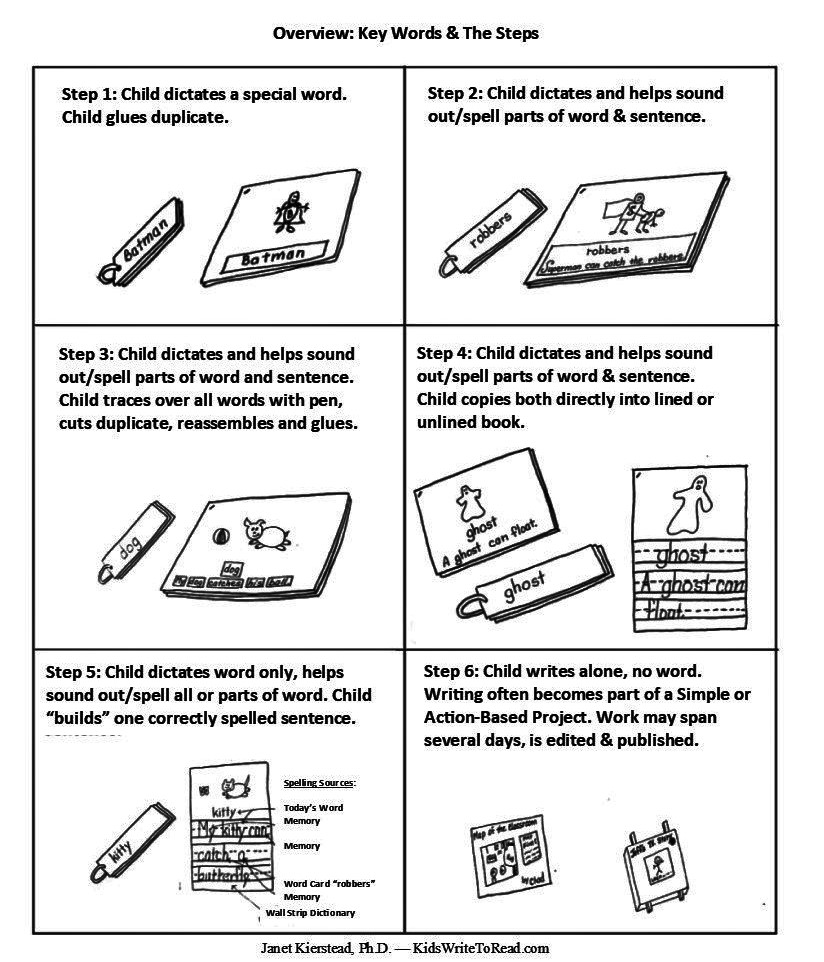
To help you decide when to move a child on to the next step — see Making the Steps Fail-Safe.
Introducing Key Words to a more advanced child
If the child can already write a little on their own, start them at Step 2. There, you texting both a Key Word and a sentence.
The Helper copies both of them on the word card. The word goes on the front in ink, and the sentence on the back in pencil (so it doesn’t bleed through). Then you make a duplicate on regular paper, for the child to glue onto their drawing.
That will soon be too easy for them, so check the criteria on the fail-safe page, consult with the Helper, and decide whether they’re ready to move on to Step 3.
More Information And Detail
Here’s some more background and detail about this strategy and the basic approach.
As a specialist in early childhood education and emergent reading, I developed this basic Key Words & The Steps approach while working with preschool children and with students in my own K-2 classroom.
You will find more about my professional background here. And you can read more about the rationale for this a”natural” approach here.
 Why It’s Important to Start When a Child Is Ready
Why It’s Important to Start When a Child Is Ready
Children are ready to translate their own speech into print earlier than most people realize. See what neurological studies at Harvard show us about brain development, age and readiness.
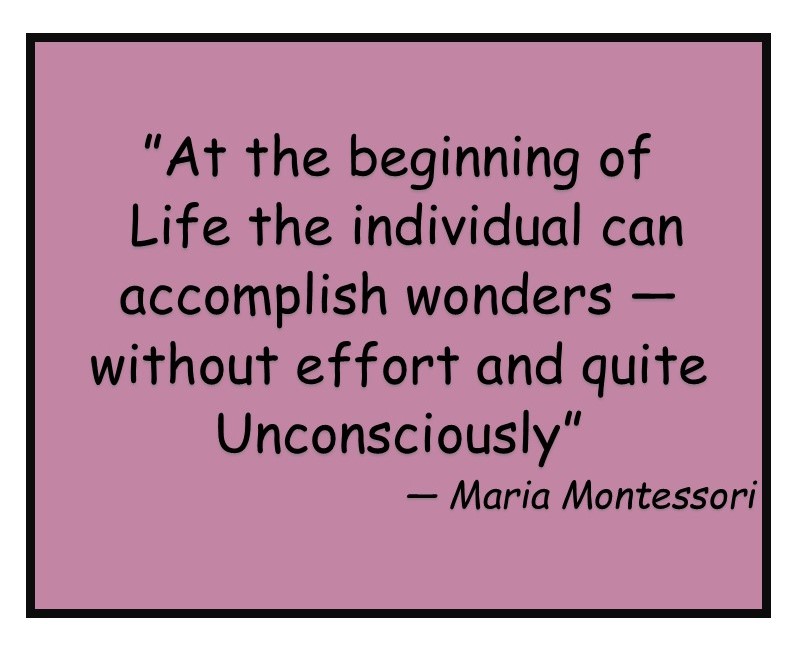 Findings confirm Montessori’s theory that as a child’s brain develops, they go through what she called “sensitive periods” for learning certain skills.
Findings confirm Montessori’s theory that as a child’s brain develops, they go through what she called “sensitive periods” for learning certain skills.
The results also suggest she was correct in thinking a child will have more difficulty learning a particular skill once their sensitive period for it passes.
So I recommend letting the child show you when they’re ready. Try this phone/texting strategy with any child who’s able to carry out a conversation on the phone. If they’re fascinated by seeing their own “talk” written down, they will take from it what they’re ready to absorb.
If it’s not obvious whether a child is ready, you can look for other signs.
For how to work on each of The Steps, check out #4 and #5 on the list of readings near the end of the page, Learning At Home.
You’ll also find a printable set of instructions for each step here. (This chart is designed for classroom use, so there are references to phonics materials you can ignore. For more information, see the page already linked in the phonics section above, Phonics With Key Words.)
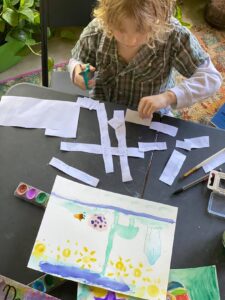 Example at Step 3: Ethan
Example at Step 3: Ethan
Here’s Ethan, who began with Key Words in April of his kindergarten year.
Now three months later, he’s at Step 3. He’s dictated a 3-sentence story, and he’s now cutting the sentences apart so he can scramble them up — all 3 sentences together. Then he’ll mix up and reassemble them a couple of times, reading all three again each time.
He remembers how the sentences go, because he just dictated them to his mother. And to check his work, he uses the back of his word card, where his mother has written the sentences for him.
In doing this, he’s actually developing the skills that go into “cold reading.” Here, he’ll learn to recognize many “sight words” for reading.
He’ll also be continuing to develop a solid foundation in phonics. For he’ll always be helping to spell the Key Word he’s asked for –and some of the words in his sentences.
Step 3 is so full of reading skills, I like to keep a child here as long as they’re happy doing it. (Check the criteria to decide when it’s too soon to move a child on.)
He also writes on his own at other times during the day.
Moving Into Books
See how Ethan and other children write their own pre-primers/basal readers — then from there, move into professional published books.
Keep this casual and light — just as when we help a child learn to speak
It’s very important the child experience this activity as just something they enjoy doing with you and the Helper. Pressuring them to perform can be very harmful — and it’s not necessary.
For the structure of The Steps supports their natural process. And if we begin pushing them to do something they find too difficult, we’ll just be getting in their way. They may lose confidence, even balk.
You will easily avoid this if you keep in mind that with this strategy, we’re mirroring how we help a child learn to speak.
That is, we model by emphasizing a word that has strong meaning for the child. They absorb, and we wait patiently. Eventually we hear them use those words.
See the several features of this strategy that explain why this approach is approach works so well.
You’ll be amply rewarded for your time and patience, for the child you’re helping will be accomplishing two things at once — 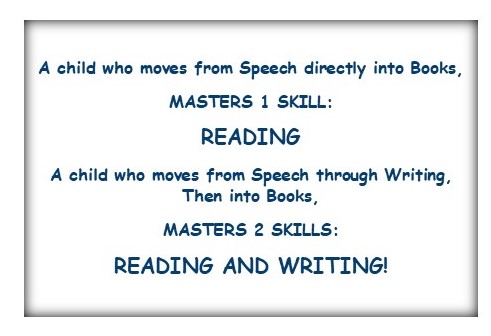
Join our Facebook Group!
To keep up with new information, join the our Facebook group, Helping All Children Write To Read.
This website is part of a volunteer project I’ve designed in my retirement. I hope together we can help all children succeed. For I know that struggle and failure are completely unnecessary — even for children with very limited experience. So I hope some of you reading this will not only use this with a child you already know. But that you’ll seek out a child who needs an extra boost and use these ideas to help them!
Janet Kierstead
KidsWriteToRead@yahoo.com